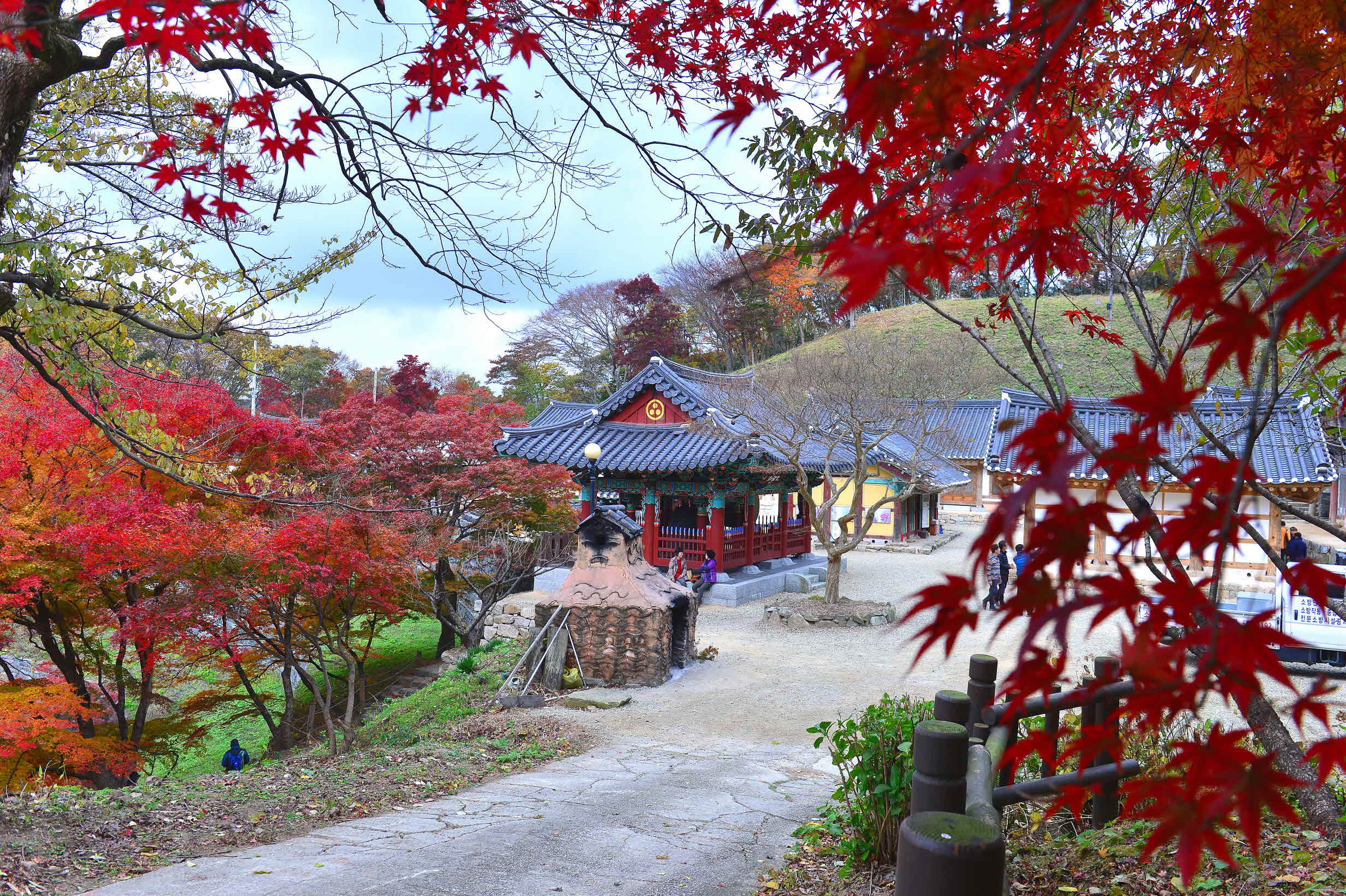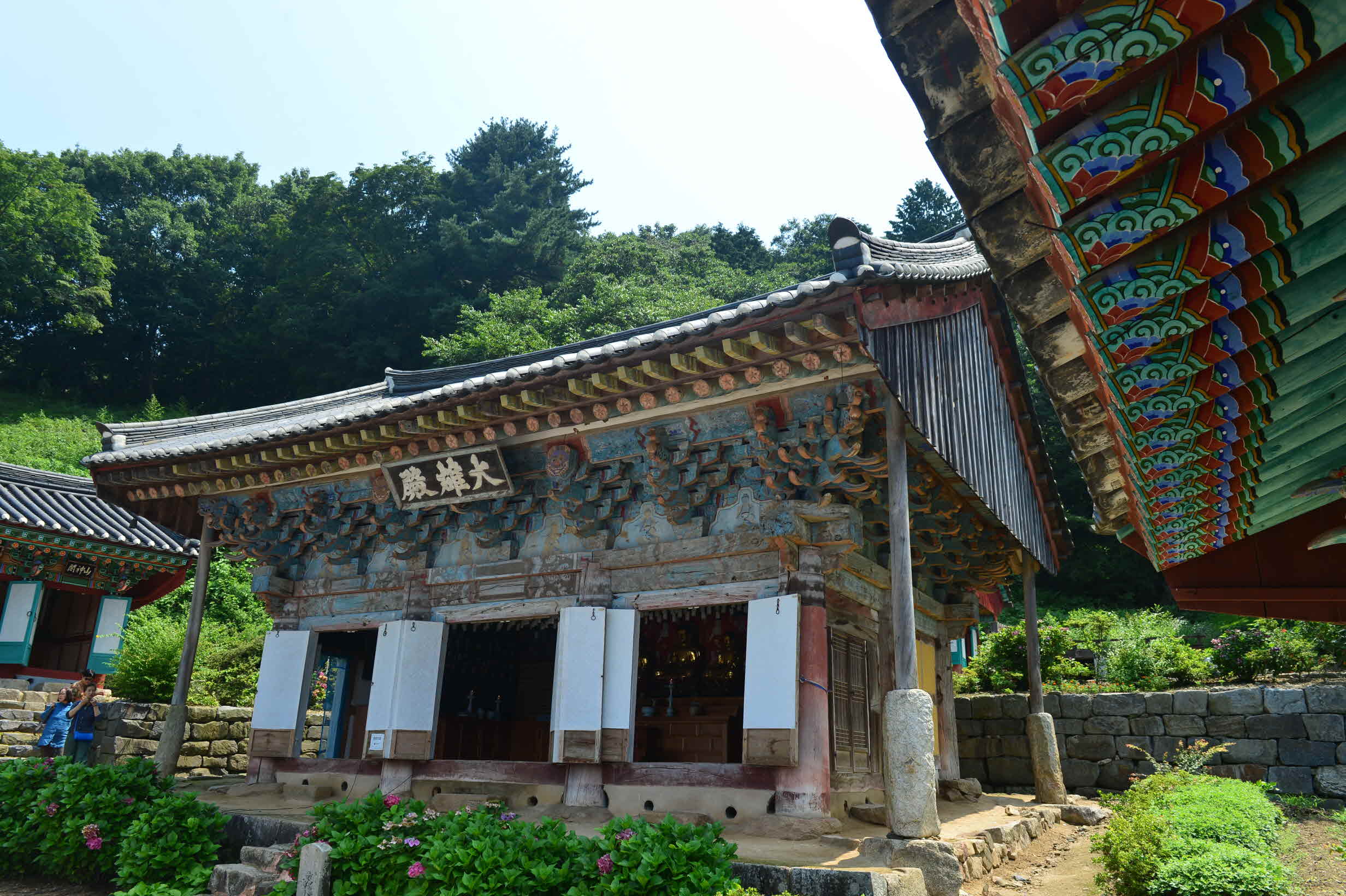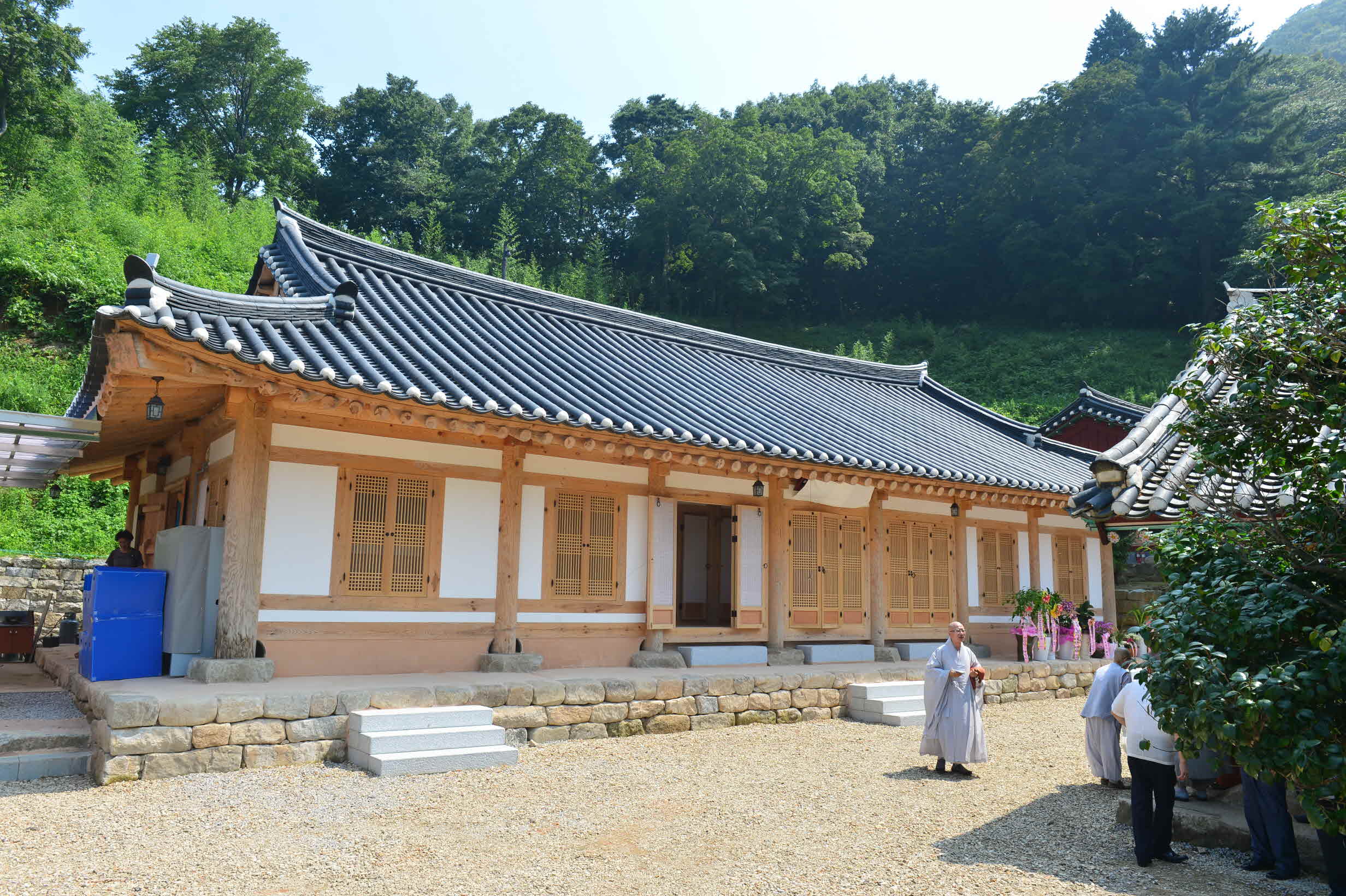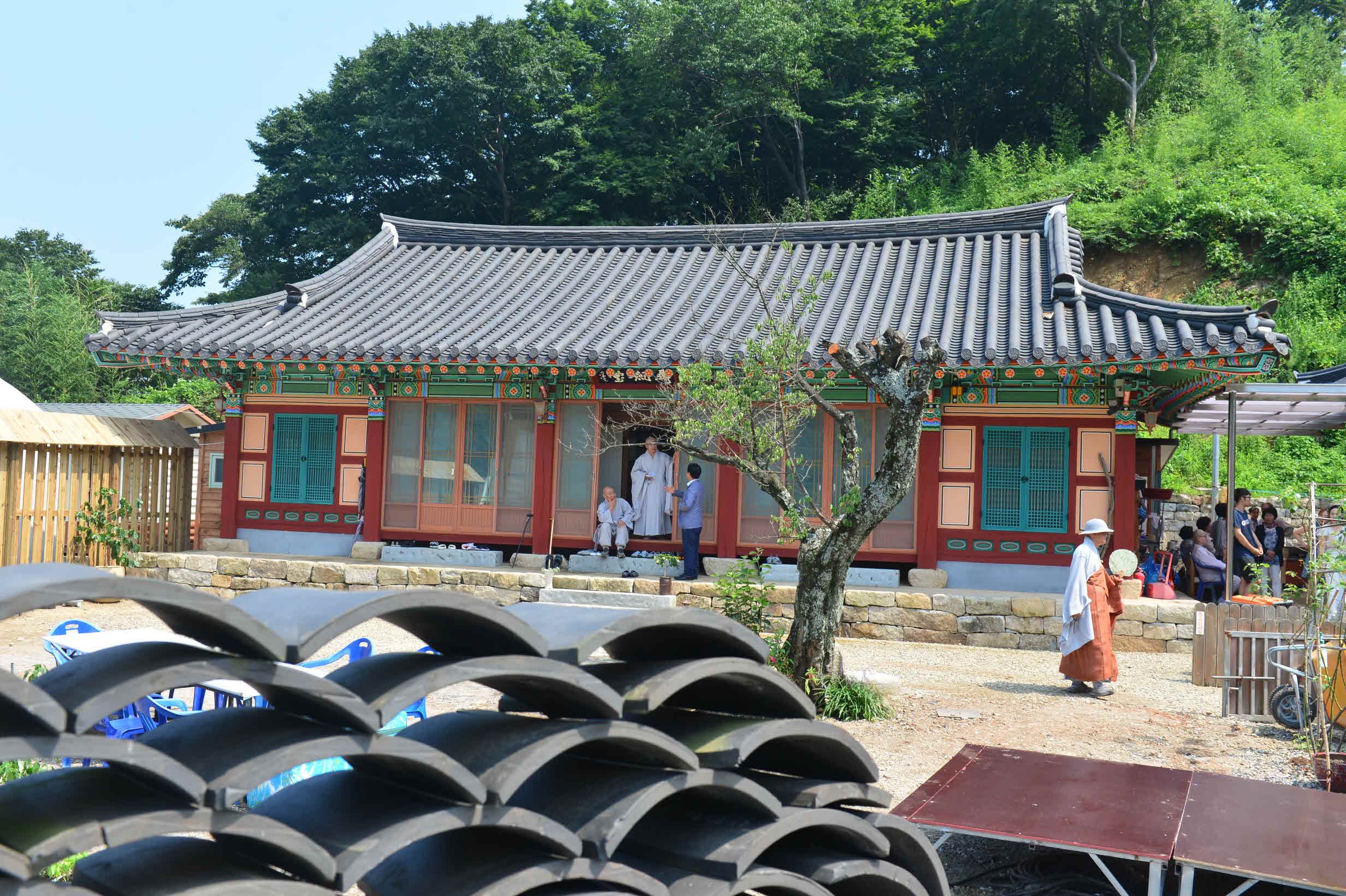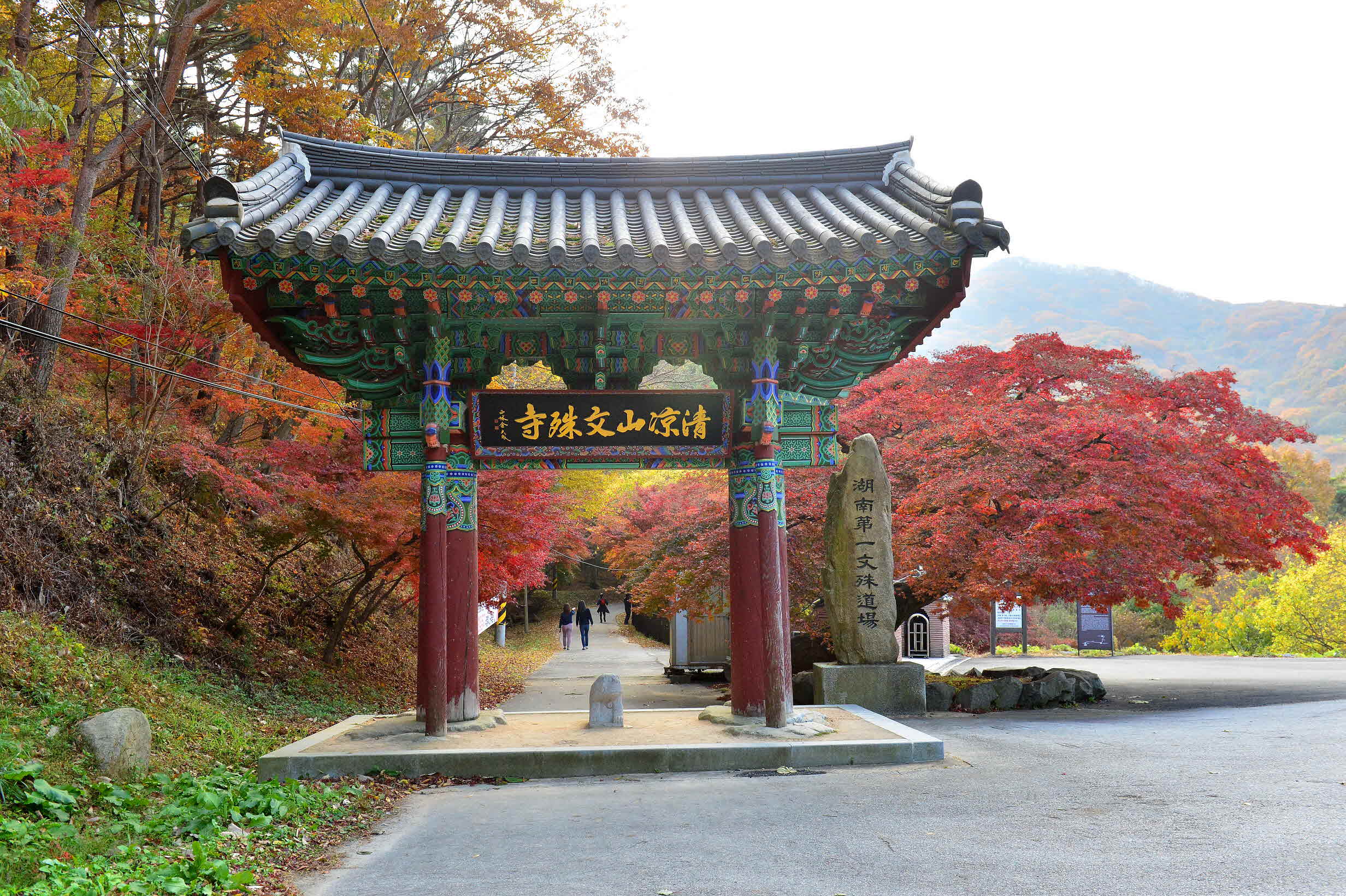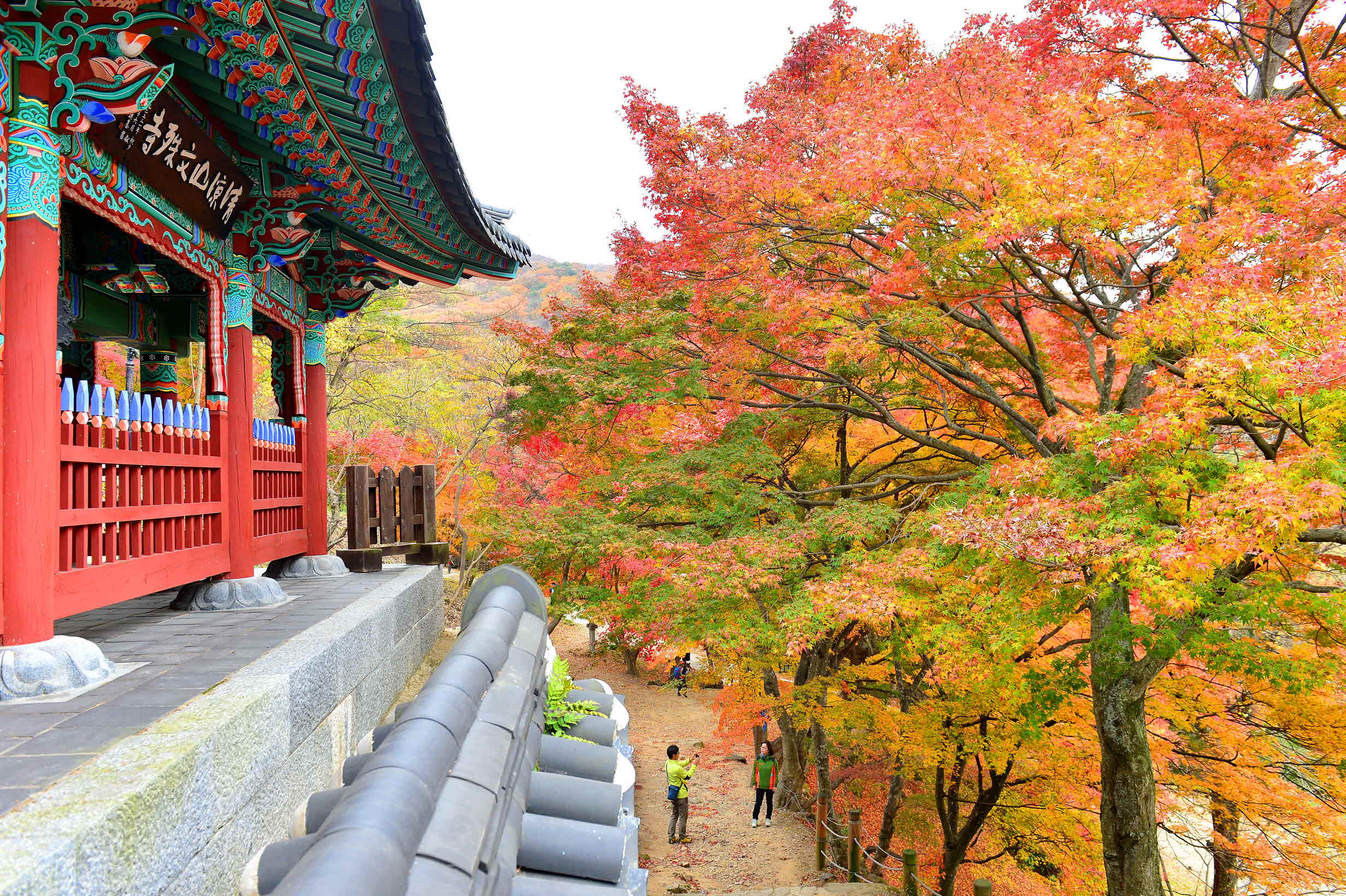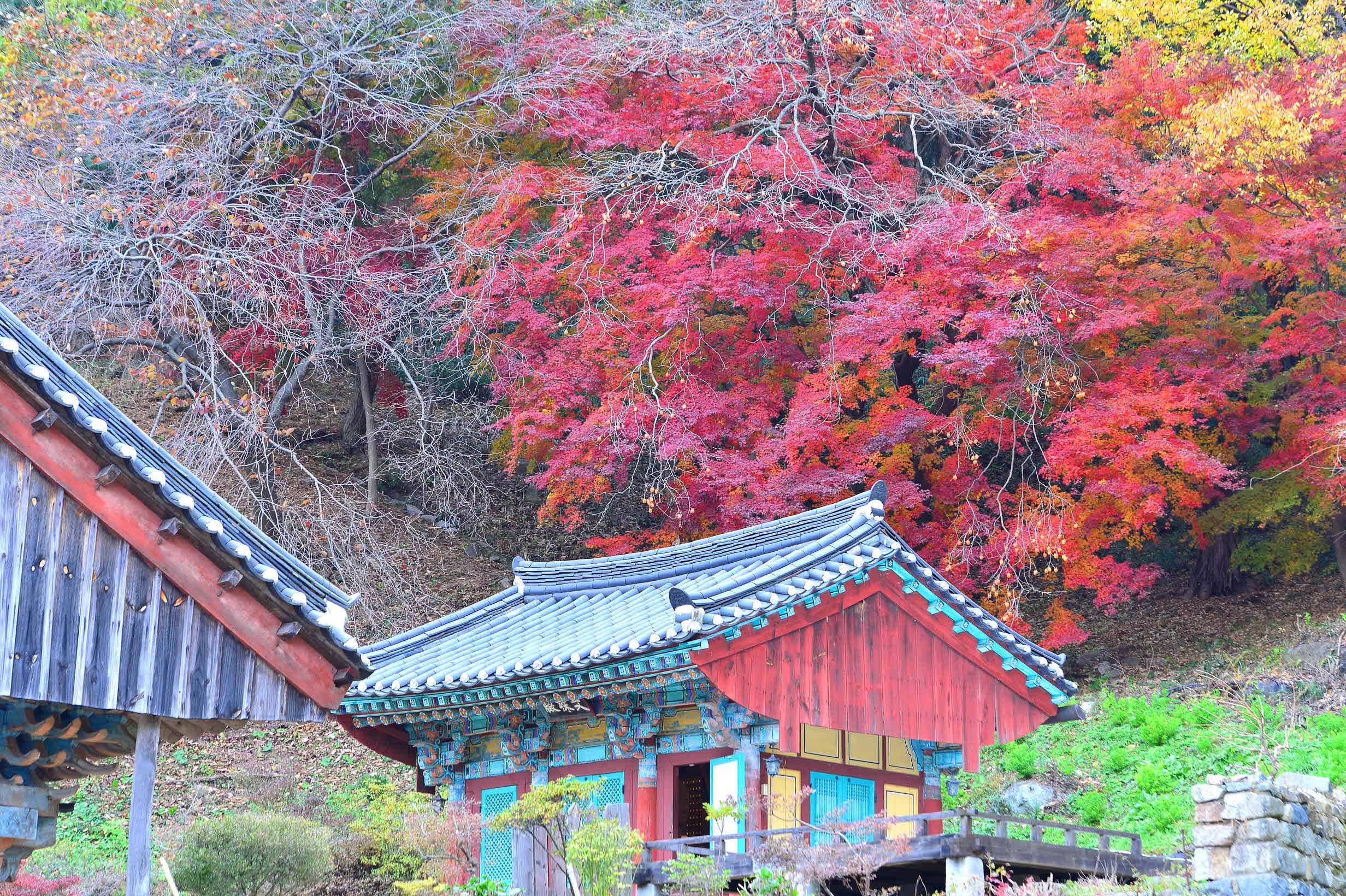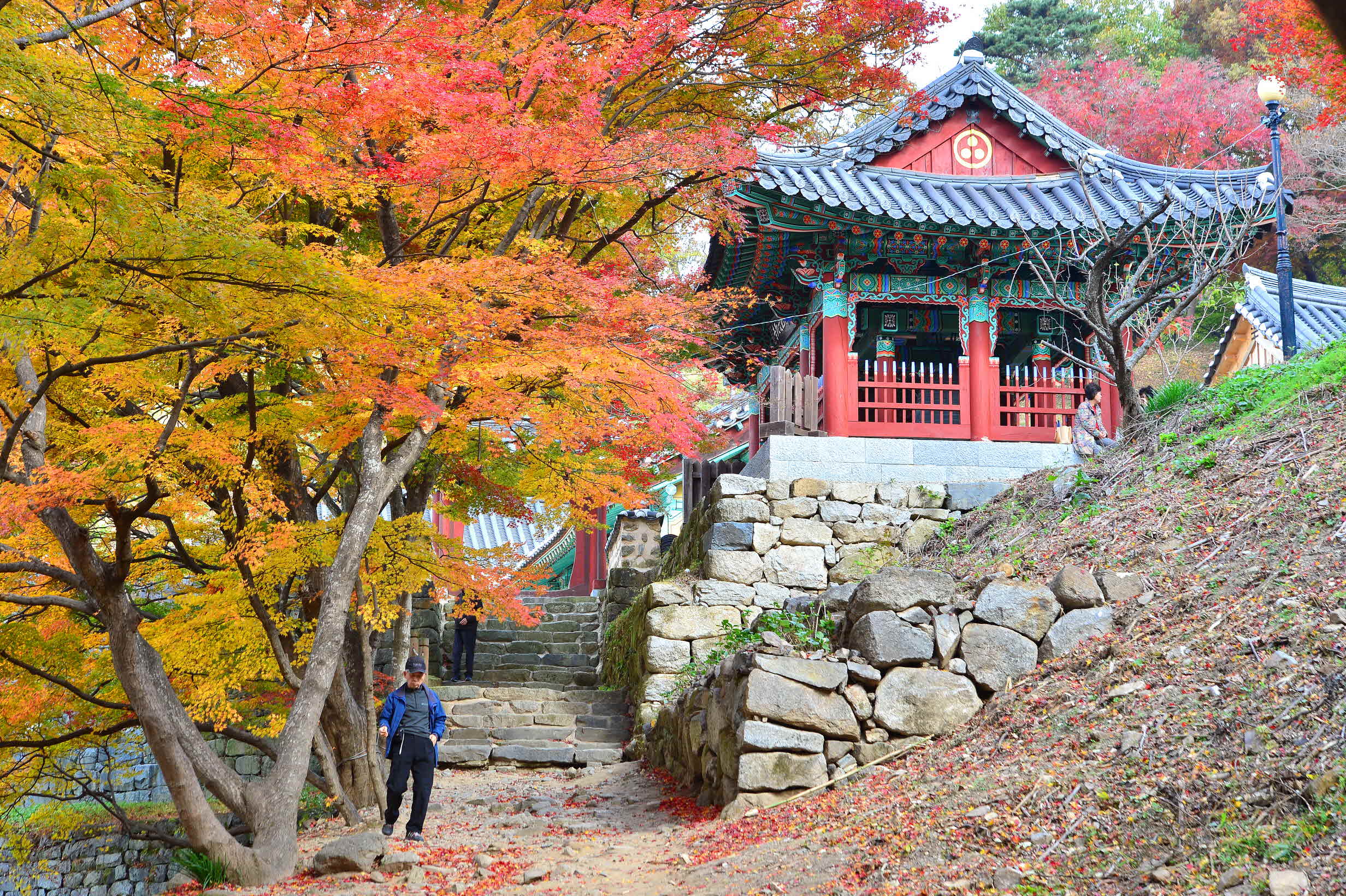Munsu Temple is located on the middle slopes of Munsu Mountain (621m), forming the boundary between Gochang County in Jeollabuk-do and Jangseong County in Jeollanam-do. From the town of Gosu-myeon, passing through Gosu Reservoir and continuing upwards through the left valley for about 6km, you will find Munsu Temple nestled in a forested area facing west.
This temple is known for its clear water, beautiful forest, and pristine environment with minimal human impact. It houses various local cultural heritage treasures, including the Munsu Temple Daeungjeon Hall (No. 51), Munsu Temple Munsujeon Hall (No. 52), Munsu Temple Budo (No. 154), Munsu Temple Three-Story Wooden Buddha Statue (No. 207), and Munsu Temple Wooden Jijang-bosal Statue (No. 208). There are also remaining buildings such as Myeongbujeon and Hansanjeon.
Daeungjeon Hall is a small-sized building with a unique gable roof. The lush greenery, flowing streams, and autumn leaves create a harmonious atmosphere that captures the attention of visitors.
Designated as a natural monument, hundreds of maple trees form a beautiful grove, offering a picturesque view.
Munsu Temple, located on the middle slopes of Cheongnyangsan Mountain, was built by the monk Jajang Yulsa in the 4th year of the Baekje King Uija's reign (644). According to the legend, while fervently praying at Cheongnyangsan Mountain during the Tang Dynasty, Jajang Yulsa met Munsu Bodhisattva in a dream and understood the Buddha's intentions. By chance, he passed by this place and found the land's topography similar to Cheongnyangsan Mountain in the Tang Dynasty, so he built a temple and named it Munsu Temple. It was later rebuilt in the 4th year of King Hyojong's reign (1653) during the Joseon Dynasty and the 40th year of King Yeongjo's reign (1764), and it stands to this day. The Daeungjeon Hall, which enshrines the Shakyamuni Buddha, was rebuilt in the 13th year of King Gojong's reign (1876) by Monk Mukam Daesa, who received support from Kim Sung-ro, the county magistrate of Gochang. It is a small building with three bays on the front and three bays on the sides, designed in a unique style with decorative elements placed between the columns and above the eaves.
